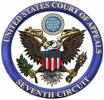Obama’s Applause Lines on Education
 President Barack Obama’s 35-minute speech on education at Wright Middle School in Madison on Wednesday was interrupted by applause at many points, but most of the reaction was pretty low-key. Three lines drew what seemed to be more enthusiastic responses from the crowd of more than 500, most of them teachers, parents, and students at the 250-student school. Each of those lines says something significant about public sentiment and Obama administration priorities on education issues.
President Barack Obama’s 35-minute speech on education at Wright Middle School in Madison on Wednesday was interrupted by applause at many points, but most of the reaction was pretty low-key. Three lines drew what seemed to be more enthusiastic responses from the crowd of more than 500, most of them teachers, parents, and students at the 250-student school. Each of those lines says something significant about public sentiment and Obama administration priorities on education issues.
One: Obama said, “I’ve got to be honest, we’ve got to do a better job of moving bad teachers out of the classroom, once they’ve been given an opportunity to do it right.” His calls for recruiting higher-quality teachers and rewarding top teachers better didn’t get applause, but this line did. Secretary of Education Arne Duncan said in a telephone interview after the speech that this didn’t surprise him — it happens wherever the president speaks about education, he said. Raising the quality of teachers, in large part by doing more to identify quality teachers (and those who aren’t) is one of the highest, but most difficult, priorities for Obama and Duncan. And moving out the ones who really aren’t good at it is especially difficult, particularly given the defensiveness of teachers’ unions when such issues come up.
Two: His call for overhauling the way testing is done nationwide.

 The court staked out no new legal ground in its opinions last week, so I’ll just briefly describe a case that nicely illustrates a classic problem in evidence law. Based on information provided by a confidential informant, Milwaukee police stopped a Ford Excursion on suspicion of drug activity. Inside were Marc Cannon (the driver), David Harris (Cannon’s cousin), $8,900 in cash (found in Harris’s pockets), and a brick of cocaine. The cash pointed to Harris’s likely involvement in the drug-dealing operation, but, without more, the evidence still seems short of beyond a reasonable doubt.
The court staked out no new legal ground in its opinions last week, so I’ll just briefly describe a case that nicely illustrates a classic problem in evidence law. Based on information provided by a confidential informant, Milwaukee police stopped a Ford Excursion on suspicion of drug activity. Inside were Marc Cannon (the driver), David Harris (Cannon’s cousin), $8,900 in cash (found in Harris’s pockets), and a brick of cocaine. The cash pointed to Harris’s likely involvement in the drug-dealing operation, but, without more, the evidence still seems short of beyond a reasonable doubt.